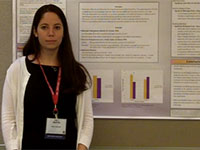From: The China Post
US immigrants turn to junk food: study
The China Post:
Immigrants to the United States often ditch their ethnic diets for high-calorie American fare, partly because it is cheap and easy to find but also as a way to fit in, a new study shows.
Immigrants who eat American are consuming, on average, 182 extra calories and seven additional grams of saturated fat compared to immigrants who stick to their traditional diet, leaving the fast-food immigrants more likely to become obese and suffer chronic illnesses related to obesity.
In fact, immigrant children who have lived in the United States for 15 years are as prone to obesity as American-born kids, one in three of whom is overweight or obese, says the study by researchers from the University of Washington, University of California-Berkeley and Stanford University.
Read more: The China Post
More of our Members in the Media >



Comments
The conclusion from this study not correct. In Canada it was recently found that the large increase of Asian immigrants dramatically reduced the number of potatoes being eaten, because potatoes are not part of a typical Asian diet, but rather rice and noodles are, which also dramatically increased. – That
information shows that immigrants take their culture and dietary habits with them. The real reason immigrants eat more junk food than the average american is more likely to be that they work longer hours on average and so have less time for healthy food preparation.
I have blogged about this issue here – US Visa holders eat more junk.
APS regularly opens certain online articles for discussion on our website. Effective February 2021, you must be a logged-in APS member to post comments. By posting a comment, you agree to our Community Guidelines and the display of your profile information, including your name and affiliation. Any opinions, findings, conclusions, or recommendations present in article comments are those of the writers and do not necessarily reflect the views of APS or the article’s author. For more information, please see our Community Guidelines.
Please login with your APS account to comment.